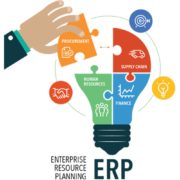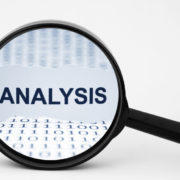What Does it Take to Build a Modern Data Architecture?
Over the last 20 years data has evolved a lot. And every organization is rethinking its data architecture. According to Gartner: “data architecture and technologies are rapidly shifting to become highly distributed”. A reason for this is the amount of data organizations nowadays have to manage.
Most commonly data architecture is defined as a set of tools and products, used to manage data. But actually it is much more than this. It defines the processes used to transform and deliver data to business users and identifies the people who will consume this data. And of course – their requirements. It is said that a good architecture flows from data consumers to data sources.
Architecture is more important than ever because it provides a road map for the enterprise. Without a well-planned approach to data architecture, another type of architecture takes place. It is the so called “spaghetti architecture” – when the different departments or business units set out to buy their own solutions. Managing this architecture is a difficult task for enterprises, especially when it comes to system security.
In recent years modern data architecture has been an increasingly common topic. Companies become more and more aware of the value of analytics. They want to make sure they can fully leverage their data. Because without the right data architecture in place, an organization can run into data anarchy.
Characteristics of modern data architecture
In the past data architectures, built by companies, were fairly static and were more like data warehouses. In contrast, the modern data architecture may still deliver a data warehouse, but one that is adaptable and agile. And moreover, this is just one component of modern data architecture. Analysts today use the term modern analytics ecosystem. It is a living organism that reacts and adapts to changes and provides governed access to individuals.
So, the main characteristics of modern data architecture are:
- It starts with business users and their requirement and flows back. In other words – it is customer-centric.
- It is automated, detects changes and anomalies and notifies individuals. And automation goes hand in hand with adaptability. Information literally flows like water from source systems to business users.
- Modern data architecture is smart. It uses machine learning and artificial intelligence to build all the models and objects that keep data flowing; to identify data types; to learn, adjust and recommend.
- It should be simple. Although it may sound like a paradoxical statement, having in mind all the processes that should be managed and governed, in fact modern data architecture can be less complex than organizations imagine. Complexity can be reduced by limiting data movement and data duplication in the first place and advocating for a uniform database platform.
- When it comes to security, we can call modern data architecture “a freedom fortress”. It complies with privacy regulations, gives full access to authorized users and keeps intruders out of the system. Modern data architecture encrypts data, masks personally identifiable information and tracks all data elements in a data catalog.
Key principles to have in mind
- One of the essential components that need to go into building a modern data architecture is identifying the types of data that are most valuable by working with business users. As we already mentioned, modern data architecture flows back and is customer-centric.
- Responsibility for data must be established and data governance should be priority number one.
- A key rule for modern data architecture is that it is not wedded to any particular technology or solution. Just like the types of data that come into the enterprise can change, so should be the approach to them. So architectures should be built to change
- A modern data architecture should be able to support data movement and analysis to decision makers at the right time. For this – a real-time foundation needs to be developed.
- Positioning data as a service – a form of internal cloud – has the advantage that processes and assets can be prepackaged (based on corporate and compliance standards) and made available within the enterprise cloud.
- Security is the foundation. A modern data architecture recognizes that threats are constantly emerging, internally and externally. One can use the persona-based approach and create security requirements in the early phases of development, so that it meets the needs of all users. Security can then be applied to raw data itself.
Needless to say, data and its management and governance are of utmost importance in today’s market. That is why it is essential to make smart decisions when investing in a modern data architecture. One thing is clear for sure: old models of data architecture can no longer meet the needs of today’s real-time, data-driven enterprises.












Leave a Reply
Want to join the discussion?Feel free to contribute!